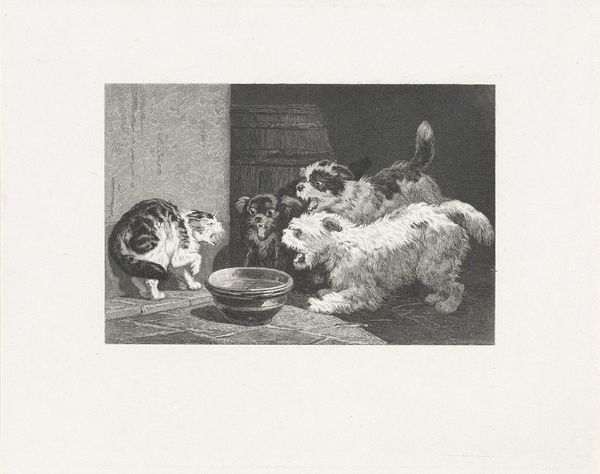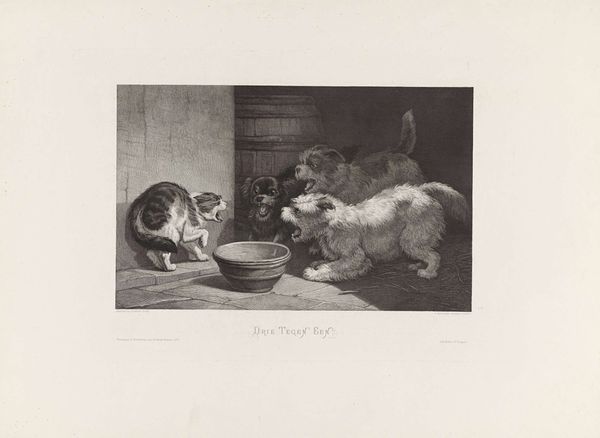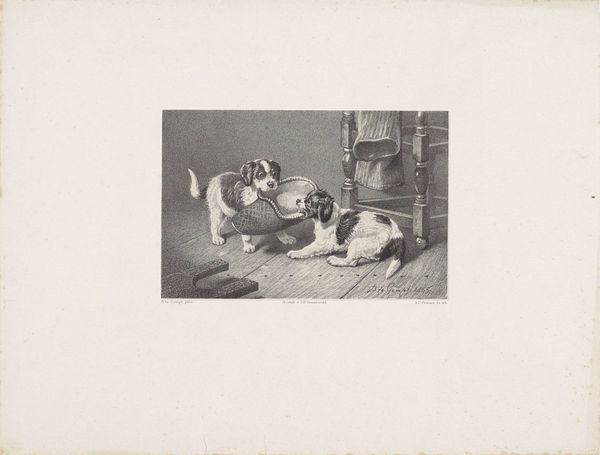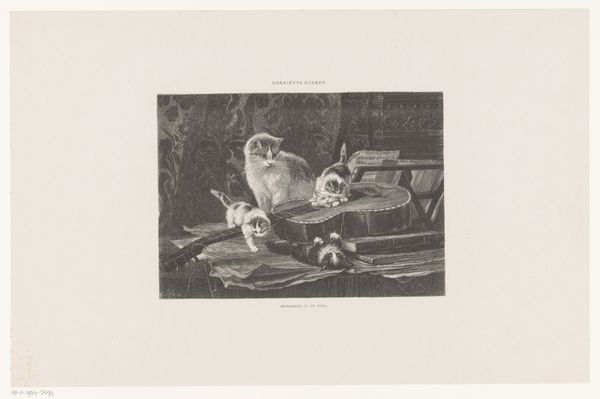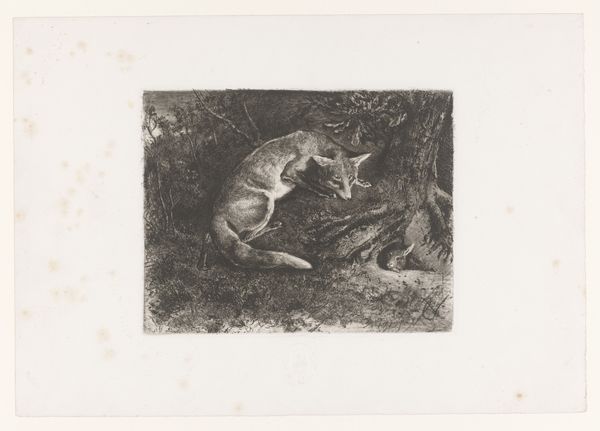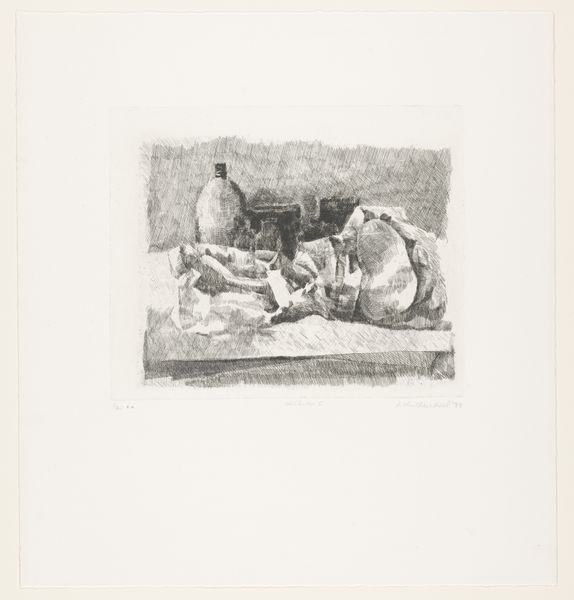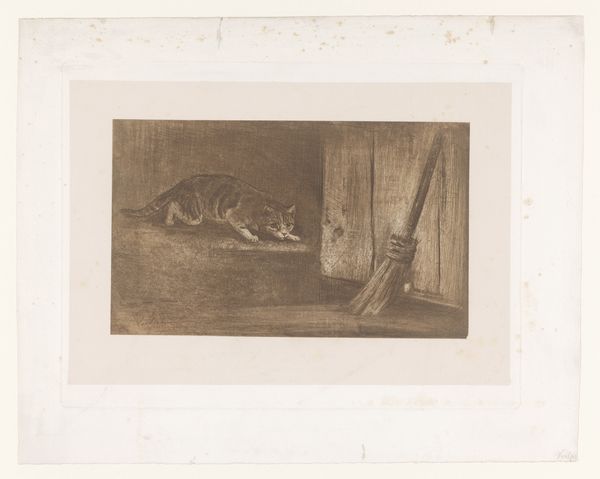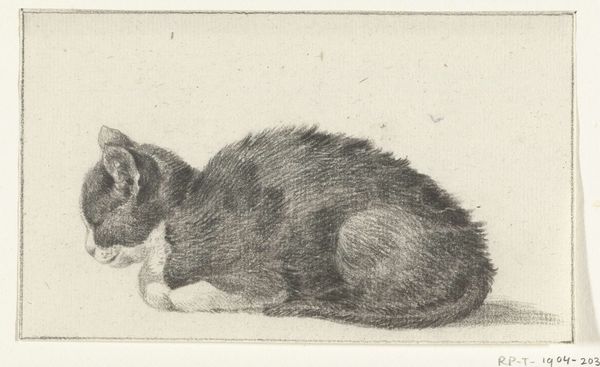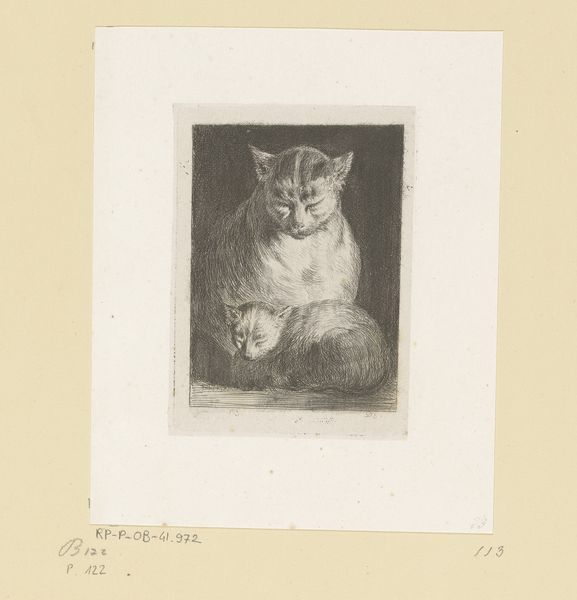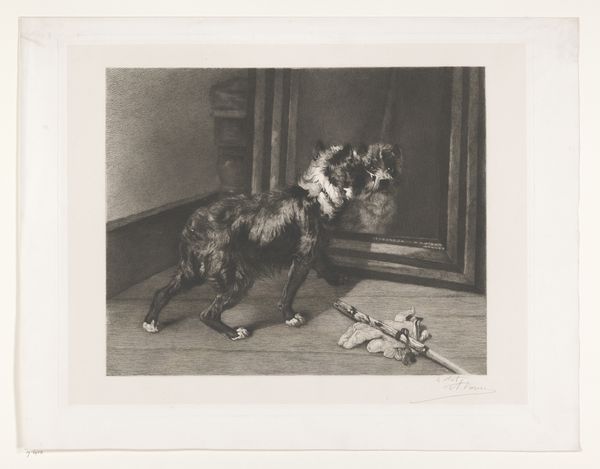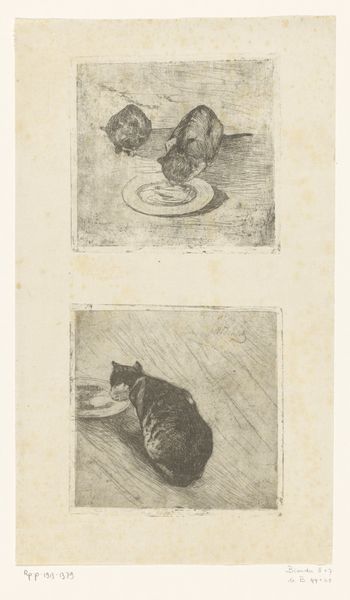
print, etching
#
portrait
#
16_19th-century
#
dutch-golden-age
# print
#
etching
#
genre-painting
#
realism
Dimensions: height 486 mm, width 380 mm
Copyright: Rijks Museum: Open Domain
Curator: What a delightful etching! This is "Spelende kat," or "Playing Cat," created around 1880 by Willem (I) Steelink. The print showcases a monochrome tableau vivant of a domestic scene. Editor: It’s rather charming, isn't it? The cat's clearly the main character here, mid-pounce, surrounded by…dominoes? It has this playfully disruptive air that just draws you in. Curator: Indeed. Steelink’s choice to focus on this playful moment hints at the rise of the bourgeoisie's fascination with pets, imbuing them with personalities reflecting human qualities and elevating their social status, a trend that subtly reinforced hierarchies within society itself. Notice the luxurious background; it frames the domestic space and, by extension, the family’s values. Editor: The positioning of the dominoes, scattered yet contained, also mirrors a controlled chaos, reflecting the societal norms and values regarding play and decorum. The domestic cat becomes symbolic, representing both freedom and confinement within the constructs of middle-class existence. There’s a quiet rebellion in the disorder. Curator: Exactly, it captures that tension beautifully. It invites us to think about how representations of animals within art often function as subtle commentaries on the socio-political structures of their time. Think of Landseer’s paintings of dogs with very distinct personalities or even Stubbs' horse paintings, portraits that mirror aristocratic values and bloodlines. Editor: And consider the absence of a human figure. All that is left is their game, their fish, and their silverware now vulnerable and subject to a non-human whim. The cat seems almost to represent an untapped animality within ourselves and upends social expectation. By showcasing this 'natural' disruption, the artist implies a commentary about the control expected in a civil society. Curator: The image acts as a lens through which to explore how power operates, and how societal norms are imposed and subverted within domestic settings. Editor: Yes, Steelink doesn't just portray a cute cat playing. He stages a fascinating commentary on bourgeois life through the gaze and actions of his feline subject. It’s more than just a snapshot; it is a social analysis embedded within an etching. Curator: A captivating work for further examination into society, power and pets. Editor: I wholeheartedly agree! There are definitely more than nine lives in that little etching.
Comments
No comments
Be the first to comment and join the conversation on the ultimate creative platform.
